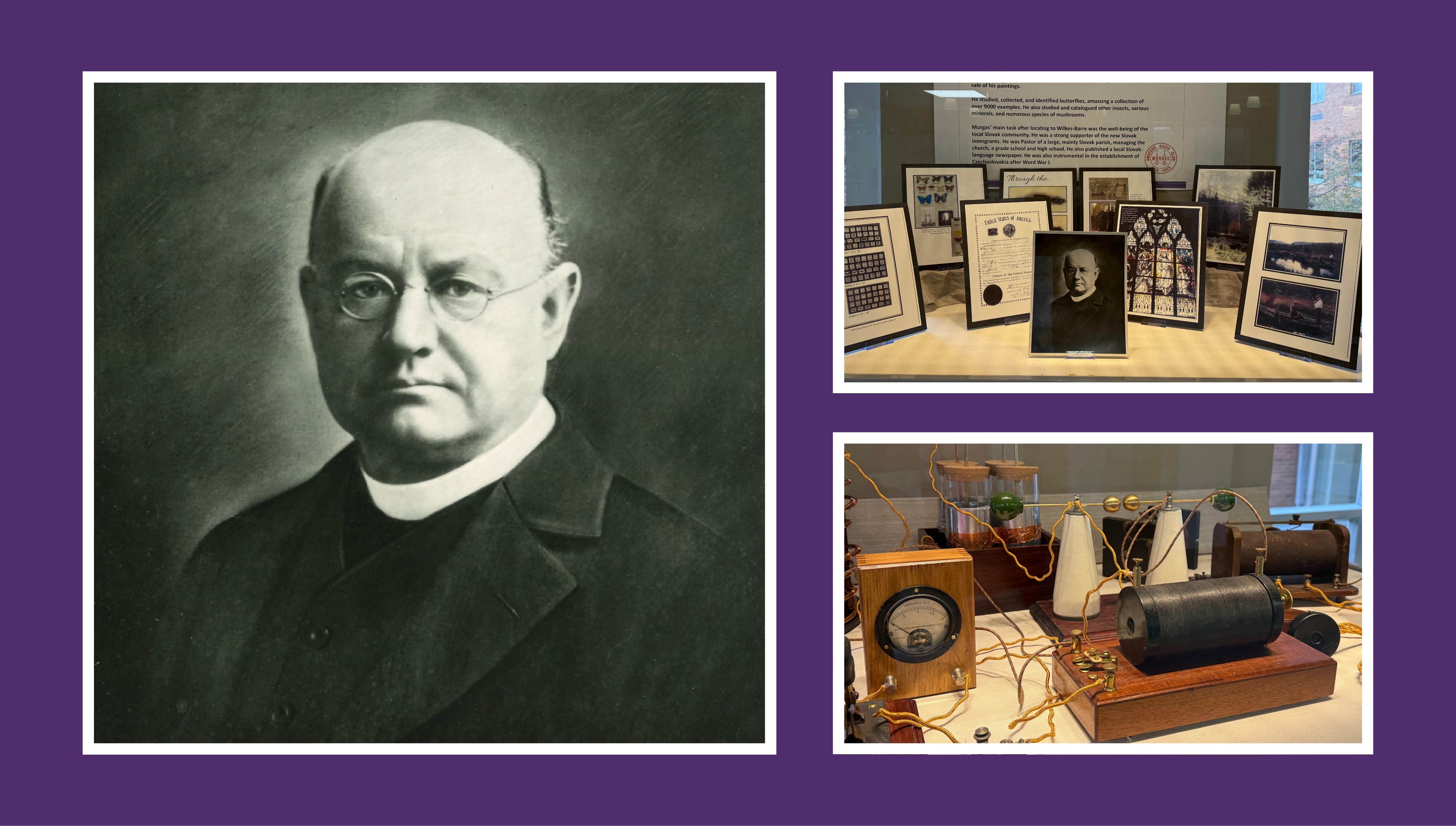Two Cities, Two Universities Partnering on Radio Transmission Event

The presidents of The University of Scranton and King's College will join the Mayors of Scranton and Wilkes-Barre on Saturday, Nov. 15, celebrating Rev. Joseph Murgas — the local priest, artist, botanist and scientist who pioneered the initial stages of wireless communication — and the 50th anniversary of the Murgas Amateur Radio Club named in his honor.
The event, which was organized in partnership with the Slovak Heritage Society of NEPA and the Luzerne County Historical Society, celebrates the November 1905 public unveiling of the “Tone Method,” a wireless communication system capable of transmitting voice and sound over long distances. It was developed and patented by Father Murgas. The test included a series of messages exchanged between Father Murgas; then Wilkes-Barre Mayor Frederick C. Kirkendall; then Scranton Mayor Alex T. Connell; and Rev. Michael John Hoban, a former bishop of the Diocese of Scranton.
At 1 p.m. on Nov. 15, Mayor George C. Brown and Mayor Paige Cognetti will recreate that transmission with King’s College president Rev. Thomas P. Looney, C.S.C., Ph.D., and The University of Scranton president Rev. Joseph G. Marina, S.J., Ph.D.
The event also marks the 50th anniversary of the Murgas Amateur Radio Club, a community of local radio operators in Northeastern Pennsylvania that originated in the 1970s. The club participates in several operating events throughout the year and provides communications support for multiple local nonprofit organizations.
The University of Scranton and King's College will hold simultaneous celebrations from 1 to 4 p.m. that are free and open to the public.
The University of Scranton will transmit from its W3USR amateur radio station with a public showing of the event in the PNC Auditorium inside the Loyola Science Center. After the reenactment, attendees will be invited upstairs to the W3USR station to operate the radios and enjoy refreshments. An exhibit is also currently on display — covering Father Murgas, the Murgas Amateur Radio Club, W3USR and HamSCI — in the Loyola Science Center’s second-floor display cases.
King’s College will transmit from the Richard Abbas Alley Center for Health Sciences on Public Square in Wilkes-Barre. Guests can also enjoy refreshments while they visit the Alley Center’s Rev. Joseph Murgas Room, which showcases his paintings, butterfly collection, wireless broadcasting work and his priestly vestments.
“This celebration not only recognizes Father Murgas, a brilliant technological pioneer who worked in our local area, but also reminds us that the people of the Murgas Amateur Radio Club, W3USR, The University of Scranton, King's College, and our greater NEPA community can continue Father Murgas’ legacy of innovation today,” said Nathaniel Frissell, Ph.D., W2NAF, associate professor of physics and engineering at The University of Scranton and member of the Murgas Amateur Radio Club.
Father Murgas was born in Tajov, Slovakia, in 1864 and later became one of the early pioneers in the science of radio. He pursued both religious studies and his interests in electricity, astronomy, and advanced physics from an early age. After he was ordained a priest in 1888, he enrolled in the Electrical College of Vienna, Austria. He traveled to Northeastern Pennsylvania in 1896 and later served as the founding pastor of the Sacred Heart Church at 601 N. Main St., Wilkes-Barre, where he conducted much of his research.






